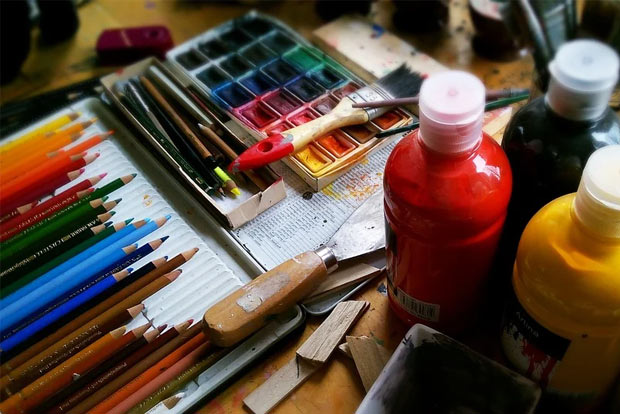Art of the matter
A portion of the blame needs to be taken up by our education system as well, which relegates arts to a footnote in the syllabus. You never get extra credits for being a master sculptor or a phenomenal still life artist while in school.

CHENNAI: Our double standards when it comes to the artistic career choices of the youth are pertinent fodder for discussion as we quietly observed World Art Day last week. It is an international celebration aimed at promoting creative activity globally, by bringing more attention to fields such as fine arts. The day was observed on April 15, the birthday of Leonardo da Vinci, a polymath, who was not just the genius behind the enigmatic smile of Mona Lisa, but also a pioneer of aviation, putting together blueprints of flying machines like helicopters much before the American Wright Brothers took off their aircraft from Kitty Hawk for the very first time.
In India, there’s a mental and economic block when it comes to promoting the fine arts as a suitably rewarding vocation. Not too long ago, during the pandemic, the communities of artists, artisans and craftsmen, if one were to include everyone under the blanket term of culture, were some of the biggest casualties of the lockdown. How quick we were to surmise that it was safer to shut down theatres, performance arts centres, open mic venues and institutions of artistic value rather than rigorously enforce a basic set of sanitation tenets that would have kept almost everyone safe?
Lakhs of people who earn their livelihood in the arts and culture space were rendered jobless as lockdowns became a norm. If an employee in any other vocation that allowed him or her to work from home, was deemed by society as an essential worker, he or she still might have had a chance to make sure ends were met. That was not the case with artists or artisans. It was ruled that art wasn’t essential. Which is ironic, because the first thing most people did when the unlocking began, was to attend musical concerts, film screenings, theatrical plays. So much for a non-essential activity.
There’s no point calling out citizens for their prejudice when it comes to supporting the arts, when there are seemingly serious issues like poverty and unemployment to address in India. Even abroad, in first world economies like the US and UK, substantial cuts were announced in the Budgets of various universities when it came to the funding of arts as a field of study.
A portion of the blame needs to be taken up by our education system as well, which relegates arts to a footnote in the syllabus. You never get extra credits for being a master sculptor or a phenomenal still life artist while in school. Art education in India requires an overhaul — with more investments, more public-private partnership, better quality of faculties as well as an attitudinal shift to make arts an aspirational choice of life.
Thankfully, steps are being taken by the Centre to further the cause of arts in a slow, albeit steady manner. The Budgetary allocation for the Culture Ministry for 2022-2023 was increased by 11.9 per cent compared to the Budget Estimate (BE) for 2021-2022. The sum proposed for the Culture Ministry was Rs 3,009.05 crore, up from Rs 2,687.99 crore in BE 2021-2022 and Rs 2,665 crore in the Revised Estimate (RE) 2021-2022. The increase comes in the aftermath of a 15 per cent dip last year, when the proposed expenditure was reduced from Rs 3,149.86 crore in 2020-2021. Pensions for old artists have also been increased while financial assistance to students has also seen an uptick. India’s rich artistic and cultural faculties are tools to extend its soft diplomacy globally. And in a post pandemic world, we should be able to count on it as a potent revenue stream as well.
Visit news.dtnext.in to explore our interactive epaper!
Download the DT Next app for more exciting features!
Click here for iOS
Click here for Android



